1. Electric cars will be the new norm
The rise of electric mobility has caught the attention of many fuel retailers around the world. At first, some dismissed it as a trend for green thumbs. Others viewed it as an unrealistic and out-of-reach technology—which few would want and fewer could afford. Hardly anyone acknowledged electricity’s potential to revolutionize the mobility industry. A couple of years later, however, the sentiment couldn’t be more different.
We went from having 1 million EVs on our roads in 2016, to nearly 20 million today. In the coming decade, the number of EVs on our roads will rise even further. It’s predicted that there will be over 200 million electric cars, vans, trucks, and buses on the world’s roads by 2030.
The rapid uptake of electric vehicles is driven by consumer behavior, commercial fleets, government legislation and incentives, as well as pledges by OEMs.
As all of these shifts provide a unique opportunity for fuel retailers to tap into and leverage their strategic location and infrastructure. Below, we take a closer look at each of these trends.

Private passenger vehicles
More than 50 percent of consumers looking to buy a new car consider buying an EV. Whether they’re driven by a sustainability mindset, an ambition to reduce their dependence on foreign oil, or simply convenience and price, EVs are capturing the minds of consumers today.
As a result, EVs have reached the tipping point in society. According to a recent McKinsey & Company report, passenger EV adoption reached the critical point in the second half of 2020, when EV sales and penetration accelerated in major markets despite the economic crisis caused by the COVID-19 pandemic.
Commercial fleets
While passenger cars are often the first thought when it comes to electrification, commercial vehicles actually represent a significant portion of the emissions from transport. As governments and businesses seek to achieve carbon neutrality, electric vehicles are already being deployed en masse in commercial transport.
To name a few, IKEA, Amazon, UPS, DHL, FedEx, and Uber have all announced fleet electrification to proactively address the climate crisis and meet their emission reduction targets.

Original equipment manufacturers (OEMs)
Electric vehicles are verging on the point where they are simpler and cheaper to produce than fossil fuel-powered vehicles. According to research by BloombergNEF, while today EVs are more expensive to produce than ICE vehicles, by 2027, they will be at cost parity and by 2030, EVs will be cheaper than a conventional ICE vehicle.
To demonstrate this point, by 2025, there will be around 400 new EV models on the market, illustrating OEMs’ commitment to ramping up EV production. For many of these models, the price premium for driving electric will be consigned to history sooner, making the switch to electric mobility more affordable and more accessible for the majority of drivers.
At the same time, some OEMs including Ford, G.M., and Mercedes have stated their intentions to end ICE vehicle production altogether.
Government legislation and incentives
In 2021, discussions have centered on the end date for internal combustion engine (ICE) vehicle sales. New regulatory targets in the European Union and the United States now aim for an EV share of at least 50 percent sales by 2030 and at least 30 countries have announced timelines or intentions for ICE sales phaseouts.
Together, these trends present significant challenges for fuel retailers worldwide. According to a Boston Consulting Group study, without substantial changes to their business models, at least a quarter of service stations worldwide are at risk of closure by 2035.
2. Electric mobility challenges for fuel retail
The rise of electric mobility is underpinned by demands from consumers and businesses alike to become more sustainable.
For years, sustainability was seen as either an afterthought for businesses or a noble cause for NGOs. Over the past decade, however, sustainability has become one of the driving forces of innovation—both in mobility and beyond.
As consumers began to shift their perception towards sustainability and sustainable alternatives—like electric vehicles—began to become more mainstream, their perception of the oil and gas industry soured.
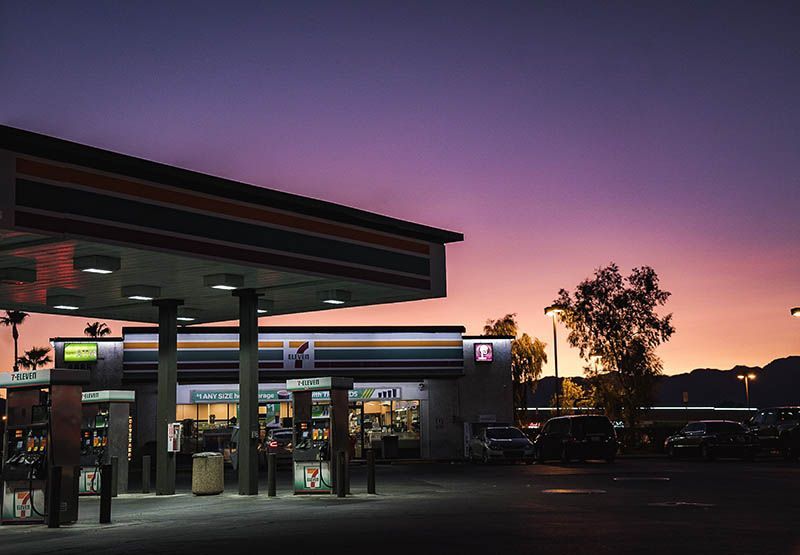
Public perception of fuel retail
In recent years, the oil and gas industry has faced more opposition than ever before. Whether it’s from a public who increasingly considers climate change a global emergency or from the lack of accountability from fossil fuel organizations, public trust in big oil is eroding.
The fact is that fuel retailers are intrinsically intertwined with big oil. Often, gas stations are the only touchpoint the majority of consumers have with oil and gas companies. As younger, environmentally conscious, and politically motivated consumers grow in both size and market share, this points towards a serious public perception challenge for fuel retailers.
As the global consulting firm EY says, these younger consumer’s “viewpoints will become especially vital to the continued relevance of the [fuel retail] industry”.
To confront this reality, even oil and gas companies are beginning to reconsider their position in today’s decarbonizing world and how they want to do business in the future… and one key target is EV infrastructure.
As the number of electric vehicles on the roads continues to skyrocket, it’s essential that charging infrastructure meets the demands of drivers.

The Tesla Paradox
And then comes the Tesla paradox: While OEMs have traditionally only produced the vehicle itself, Tesla’s expanded Supercharger offering has changed this paradigm.
Because the company owns its own charging network, Tesla has the ability to own more of the transportation value chain. And the company isn’t alone: other manufacturers are making moves to vertically integrate their charging infrastructure.
Oil and gas investing in EV infrastructure
Fuel retailers are stepping up their game to avoid the risk of handing over their customers to OEMs entering the EV charging market and position themselves for success in the age of new mobility.
According to a McKinsey and Company estimate, whilst today the value pool for EV charging is negligible, with a high level of capital-expenditure investment, EV charging has the potential to become a $20 billion industry by 2030.
As a result, major industry players are investing in EV charging infrastructure across the globe:
- Shell announced it will install 500,000 on-street electric vehicle charging points by 2025;
- BP will increase its network of EV charging points to 70,000 by 2030;
- Total will increase its EV charging network in Europe to 150,000 charging points by 2025 from 18,000 today.
Together, these announcements point toward a shifting mindset from big oil companies: EV charging is not only a way to rekindle public trust, but it’s also on the cusp of becoming more profitable than conventional fuels.
“If I think about a tank of fuel versus a fast charge, we are nearing a place where the business fundamentals on the fast charge are better than they are on the fuel,”– Emma Delaney, head of customers and products at BP.
3. Electric mobility opportunities for fuel retail
Fuel retailers are in a privileged position—both in terms of existing infrastructure as well as market position—to capitalize on the electric mobility revolution.
By building on their strategic location around major roadways, fuel retailers can tap into this growth, (re)connect with younger consumers, and actively accelerate the transition to electric mobility by reducing consumers’ “range anxiety”.

Address range anxiety
Today, many potential EV drivers cite range anxiety—or the uncertainty about finding charging stations—as the main barrier to buying an EV. But it’s a chicken and egg scenario: without adequate infrastructure, EV uptake will be slower; yet without the vehicles on the road, infrastructure will continue to lag behind.
To address range anxiety, governments on both sides of the Atlantic are promoting EV charging infrastructure:
- In the US, the Biden administration has called for $7.5 billion worth of EV charging infrastructure as part of his historic $1 Trillion Infrastructure Bill;
- In the EU, a target of 3 million public charging points by 2030 has been set as part of the European Green Deal;
- In the UK, Boris Johnson said the government would spend £1.3 billion on charging infrastructure to support the transition to electric vehicles.
As a result of this investment in EV infrastructure, drivers’ fears about not being able to charge are dissipating and our research suggests that this will only further accelerate the electric mobility transition.
Offer on-the-go fast charging
In the early days of electric mobility, charging an EV was slow—think days—and driving range was short. Whilst these were perfect daily commuting vehicles, in terms of longer-distance transport, they could not compete with their gasoline-powered counterparts. However, the technology that underpins electric mobility has evolved dramatically over the past few years.
Today, EV range has grown exponentially and almost all EVs can now fully charge their battery in under an hour at a fast charging station. These two factors combined point to EV drivers becoming far more mobile and undertaking longer journeys—providing charging stations are available.
The charging stations that allow these rapid charging times are called “fast”, “DC” or “Level 3” charging stations, depending on who you’re talking to. Unfortunately, fast charging stations are still few and far between, and drivers are often forced to rely on slower residential or public charging stations.
That’s where fuel retailers come in. With the introduction of high-power, DC charging stations to the market, fuel retailers can essentially fill in the missing link in terms of EV charging infrastructure: on-the-go charging.
Whereas EV drivers may be able to charge at home or at work, these charging stations are likely to be far slower than fast charging stations. This presents a unique opportunity for fuel retailers to get ahead.
What’s more, following our research, 29 percent of current EV drivers already charge their EVs at gas stations and a further 21 percent would like to if the option was available. With their existing infrastructure in prime locations, fuel retails can capture this growing market.

Attract commercial fleets
While passenger cars are often the first thought when it comes to electrification, commercial vehicles actually represent a significant portion of vehicles on the road.
As governments and businesses seek to achieve carbon neutrality, electric vehicles are already being deployed en masse in short-haul transport, last-mile logistics, and commercial business fleets.
Logistics companies, like Amazon, UPS, DHL, IKEA and FedEx are aggressively electrifying their fleet to reach carbon neutrality. Others, including Uber and LeasePlan, and Origin have also embarked on the shift to electric fleets. Looking ahead, it won’t be long before many more brands adjust to an electric future.
Become part of mid-route charging strategies
As fleets electrify, the demand for public charging infrastructure will soar: beyond overnight charging, many fleets will also need to charge mid-route.
In fact, mid-route charging strategies can be profitable not only for extending delivery range, but also to avoid the investment into charging infrastructure altogether. Firms with limited space at their depot or who wish to use cheaper vehicles with smaller batteries may rely entirely on mid-route charging.
“Overall, we see a huge opportunity in fast charging for consumers and businesses, as well as fleet services more generally – that’s where we see the growth, and where we see the margins.”
– Emma Delaney, head of customers and products at BP.
4. What is DC fast charging?
Depending on who you talk to, you may have heard fast charging be referred to as DC charging, Level 3 charging, or rapid charging. But what really is fast charging, and what do those terms mean?
Today, there are three “types” of EV charging: Level 1, Level 2, and Level 3. Each level has a different power output and therefore charging speed, with the fastest being Level 3. Unlike Levels 1 and 2, Level 3 chargers use direct current (DC) instead of alternating current (AC).
Car batteries, like other electronics, are designed to work on DC – whereas the power grid, however, only provides AC. Therefore, electricity from the grid needs to be converted to DC to be usable by EVs.
At Levels 1 and 2, this is done by the car via an onboard AC/DC converter. With Level 3 charging, electricity is converted by the charging station itself and fed directly into the battery, bypassing the slower onboard converter. This allows for much higher power output and, as a result, faster charging speed.
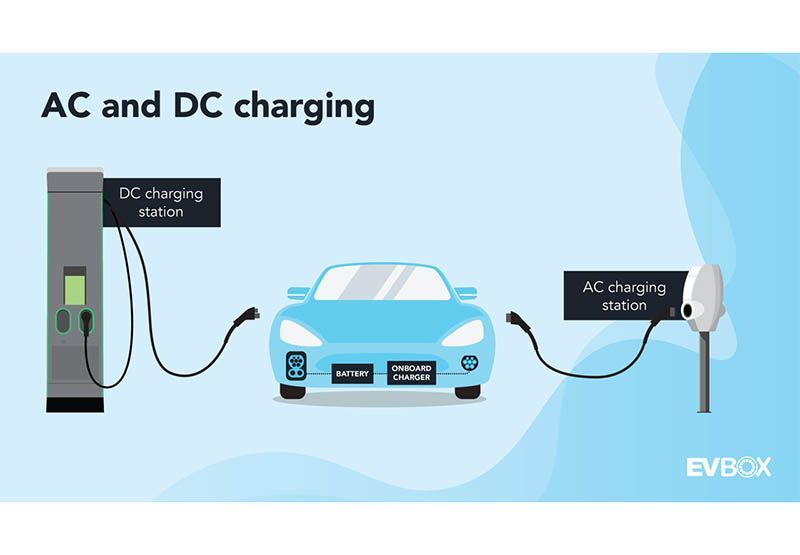
Whereas Level 1 and 2 can take hours or even a whole day to charge a battery fully, a Level 3 charger can fill up a battery in mere minutes.
How gas stations can benefit from DC charging
While Level 2 charging infrastructure is already present across many households and public parking locations in North America and Europe, fast charging options are significantly more limited. And as a relatively new, demanding technology in terms of both infrastructure and power, fast charging is not suited for either of the aforementioned locations.
However, fast charging is essential for long-distance travel with EVs, and gas stations are perfectly positioned along major roadways to serve this demand.
What’s more, they generally already have the parking facilities to accommodate vehicles and the space to install DC charging equipment. Many gas stations also provide attractive services, such as food offerings, convenience stores, or car washes, that can deliver real added value to EV drivers while their vehicle charges.

Fuel retailers are in a privileged position to leverage this trend, building on their existing infrastructure and strategic location around major roadways.
As batteries improve, the capacity and charging speed that EVs can accept increase every year. Combined with the growth in EV sales, the demand for fast charging will only continue to increase in the near future.
As a result, fuel retailers have both the resources and opportunity to meet this growing need, attract new customers, and future-proof their business.
5. Attract customers with fast charging
As people increasingly switch away from ICE vehicles, they have fewer reasons to visit gas stations. By installing EV chargers, fuel retailers can ensure that they remain relevant for EV drivers and can attract this lucrative, new segment of the market. As we’ll see below, EV drivers are an alluring clientele, so attracting them is simply smart business.
EV drivers are high-value customers
Compared to the general population, EV drivers are more likely to be employed, have a higher income, and are more educated. According to our research, current EV drivers are predominantly male, younger than the general population, and have a median household income of $150,000. As a result, they tend to have more money to spend on services at gas stations than the average driver.
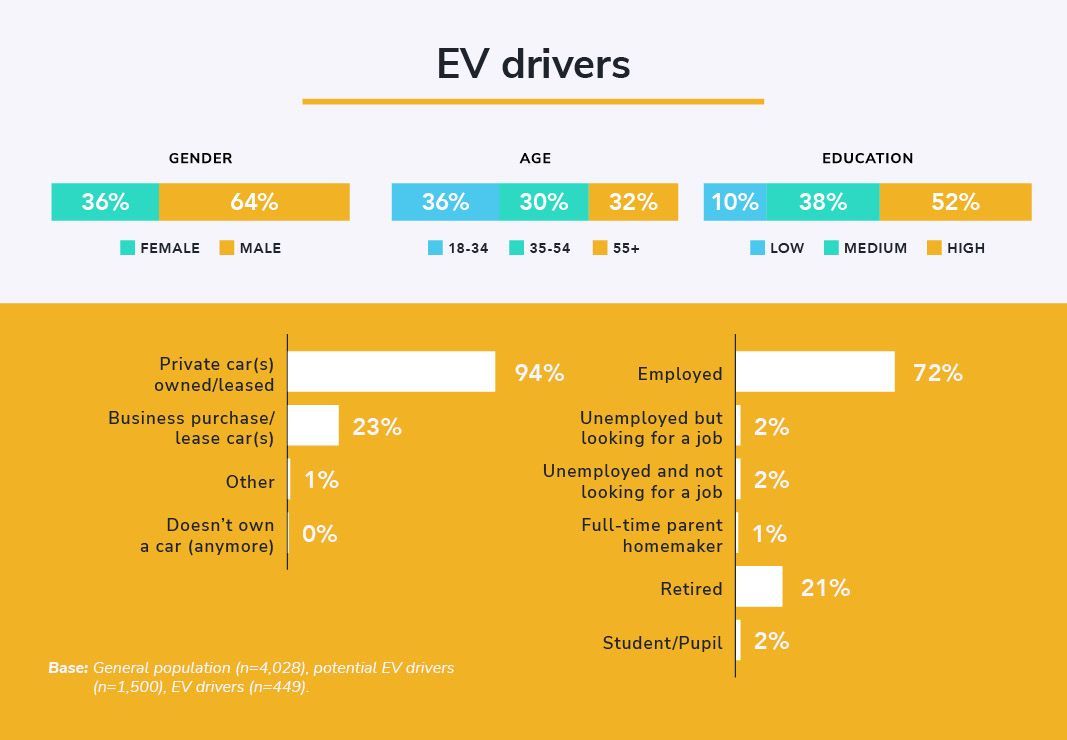
Serving EV drivers thus allows you to upsell premium services, such as barista-made coffee, independent food options, or a high-end car wash, bringing in more profit.

The question is, how can you attract this well-to-do clientele? Well, the mere fact of offering EV (and especially fast) charging can put your business on the map… literally. Online mapping services like Google or Apple Maps index charging stations, which can help attract EV drivers while they’re on the road or when they map out their long-distance route.
Many forward-thinking fuel retailers are looking to EV charging as an opportunity to add a new, stable revenue stream, upsell well-to-do customers with premium products, and future-proof their business.
Finally, offering EV charging can be a way to win back an increasingly environmentally-conscious generation. By providing a sustainable alternative, fuel retailers can remain relevant to these consumers and plug a gap in the EV infrastructure network—becoming a catalyst for the sustainable mobility transition.
Retain existing customers
As customers transition to EVs, many do so while keeping an ICE vehicle. In fact, 38 percent of current EV owners in Europe also still own a car that runs on traditional gas. As a result, some customers that come to fill their tanks may also own an electric vehicle, which they could easily charge at your location given that they’re already familiar with it.

Looking ahead, as consumers increasingly switch to electric, almost all of your current customers are prospective future EV buyers. Offering EV charging means you can capture and retain that existing customer base when they’re ready to move to electric mobility.
6. How to make money with EV chargers
To deliver more power in less time, DC charging stations are larger and more complex than AC charging stations. As a result, the purchase of a fast charging station itself can cost as much as ten times the price of an AC charging station. They also draw a lot more energy, requiring the power grid to be sufficiently managed. Next to this, regular firmware updates, and preventive maintenance is advised to ensure optimal performance.
Whilst this at first sounds negative, these three factors are what offer fuel retailers a genuine opportunity: Fast charging stations are generally not suited for residential or municipal public charging.
As a result, by providing this premium service, fuel retailers can generate revenue in many ways, including direct revenue from charging, upselling other services, and benefiting from an increased online visibility.
Direct revenue
Of course, EV charging offers gas stations a new, stable source of revenue in the form of fees for charging. There are many ways to set up tariffs, such as charging by the kilowatt for the energy used, charging a fixed per-minute price, setting a flat fee per transaction, or a combination of these. Plus, with advanced charging management software, you can easily allow flexible pricing based on the time of day or utilization.
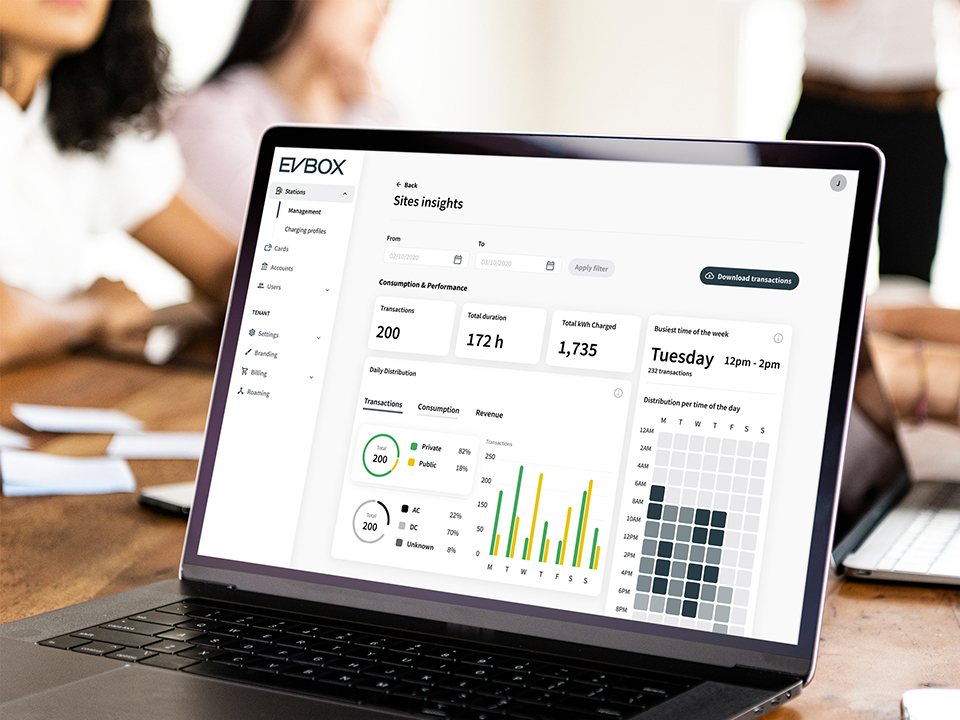
Regardless of the chosen tariff, electricity is cheaper and more predictable than fuel. Political instability, such as the invasion of Ukraine, is a salient example of oil prices’ volatility, which can greatly influence margins.
Electricity prices, by comparison, are far more stable, and the fluctuations that do occur are more predictable and less susceptible to global political and economic conditions.
Upselling
Beyond revenue from charging, attracting EV drivers also offers the opportunity to upsell complementary services while their vehicle charges. For example, they can provide premium food or drink options, or a convenience store stocked with essentials. Given that EV drivers generally have more to spend than non-EV drivers, they may well be more receptive to higher-end goods that can increase profits.
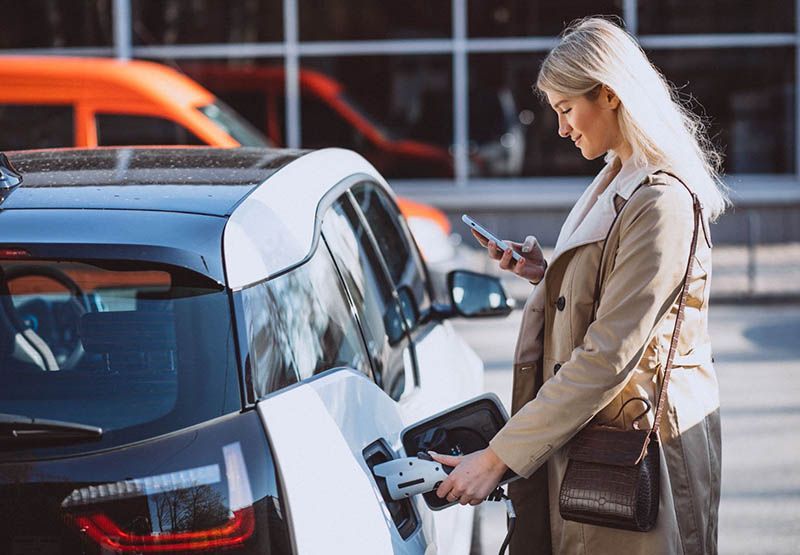
From upselling opportunities to generating its own revenue, EV charging is a great way to bring in some new business—and it’s only going to get bigger.
Charging strategy
As we have seen, DC chargers are an expensive investment that require a few considerations. Indeed, not all DC charging stations are built the same: between different sizes, architectures, and power output (ranging anywhere from 50kW to 350kW), choosing the right one for your unique situation requires some thought.
The first thing to determine is the size of your prospective EV clientele. You might think about the rate of EV ownership in your country and what models are most popular. You can also consider your location: are you next to a busy road or a small side street?
By getting an idea of the market, you can determine the appropriate scale and scope of your installation, both in terms of the number of charging stations and their power output. For example, if your gas station is located on a highway between two major cities, you will likely consider installing a larger number of higher power chargers to accommodate the demand. If, on the other hand, you’re situated on a smaller arterial road or in a city, fewer, lower power chargers may be a better fit.
7. How fuel retail can attract commerical fleets
While the first thought for electrification is often passenger cars, business fleets represent a significant proportion of vehicles on the road. Many businesses have already started electrifying their commercial fleets, with a focus on light-commercial vehicles used in last-mile delivery and short-haul distribution. Plus, there is a concerted push to electrify big rigs too, with billions being poured into electric truck R&D.
Last-mile delivery
One of the greatest opportunities for commercial electric vehicles currently lies in last-mile delivery. As online shopping exploded during the pandemic, the demand for logistics and deliveries skyrocketed. At the same time, environmental considerations and emissions reduction targets are pushing delivery companies to explore electrifying their delivery vehicles.
For example, Amazon announced a partnership with Stellantis to secure some of its electric delivery vehicles, on top of its existing order of 100,000 electric vans from Rivian. UPS, DHL, and FedEx are also aggressively electrifying their fleets.

Heavy-duty distribution
While less developed than light commercial vehicles, heavy-duty transport represents a major opportunity for electrification. Given their relatively short distances and comparatively low speed, heavy-duty trucks used for short-haul urban transport are especially well-suited for electric mobility.
Additionally, concerns around noise and pollution in cities are pushing governments to regulate delivery vehicles: many trucks that do not meet London’s Low Emission Zone (LEZ) requirements, for example, need to pay a daily charge. As more cities tackle urban pollution, electric trucks offer cheaper, emissions-free alternatives to polluting diesel vehicles.
Current battery technology already enables trucks to cover up to 300km on a single charge, meaning the daily distances traveled by short-haul distribution vehicles can be easily covered with only a few charging stops.
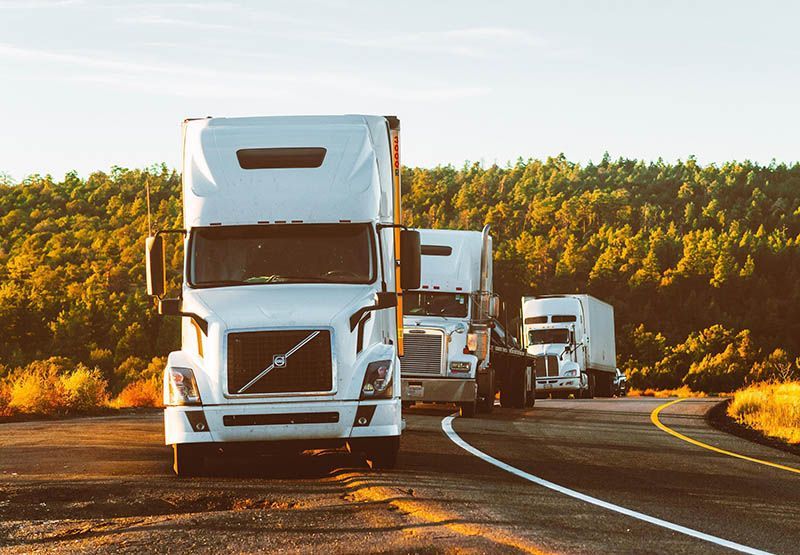
Serve mid-route charging strategies
While many of these companies will be investing in their own charging stations, a large proportion will also need mid-route charging solutions. Some businesses may even avoid investing in EV charging stations altogether, instead fully relying on mid-route charging.
Gas stations are ideally positioned to serve this market by offering fast, reliable chargers that allow business fleets to integrate them into their mid-route charging strategies. Fuel retailers can take this a step further by partnering with specific delivery or logistics companies to offer their fleets discounted charging rates or priority charging, guaranteeing a predictable revenue source.
8. What about Hydrogen or Biofuel?
Some fuel retailers may be apprehensive about investing in electric mobility when other alternative fuels are out there. What about hydrogen? And biofuels?
In the section below, we will examine these two alternative fuels and see how they compare to electric mobility.
Hydrogen
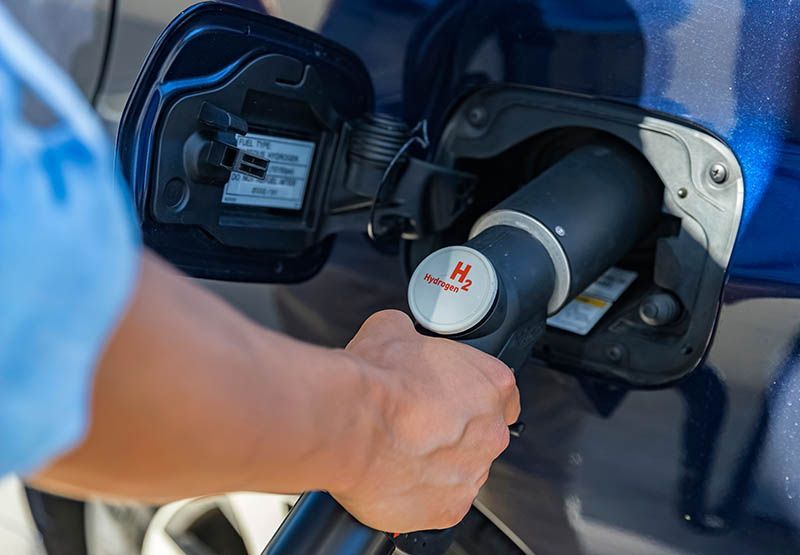
Hydrogen vehicles have been discussed a lot recently and appear as one of the replacements for ICE vehicles, alongside EVs. But how do they work?
Hydrogen vehicles use hydrogen gas as their energy source, generally by reacting it with oxygen in a fuel cell to generate electricity to power the motors. Because of this mechanism, they are often called fuel cell vehicles (FCV).
Hydrogen vehicles have a number of appealing features, most notably their fast refueling time: unlike EVs, which need to be charged, hydrogen vehicles can be filled with the gas at a pump, similar to LPG today. That said, as fast charging technology develops year-over-year, the gap between EV charging time and FCV refueling is closing rapidly.
The main challenge facing FCVs is the production of hydrogen. Currently, about 95% of hydrogen is produced from fossil fuels, created as a byproduct of the gasification of coal or by extracting it from natural gas. While it is possible to produce green hydrogen from renewable sources, this process remains prohibitively expensive and is unlikely to become sufficiently accessible for at least another decade.
<blockquote“The conclusion is clear: in the case of the passenger car, everything speaks in favor of the battery and practically nothing speaks in favor of hydrogen.” –”Battery or fuel cell, that is the question”,Volkswagen.
Finally, the development of hydrogen technology is held back by the extremely small market: globally, there were only 31,225 FCVs on the road in 2020 – compared to 6.8 million battery electric vehicles. With such a limited customer base, building out the necessary infrastructure is difficult to justify financially, as it would likely be underutilized for the next few years and depends greatly on hydrogen’s adoption.
While the same could have been said about EVs a decade ago, the truth is that modern electric cars use energy much more efficiently than hydrogen vehicles. Whereas EVs draw power directly from the grid, the hydrogen for fuel cells needs to be extracted, compressed, liquefied and transported before being used. All of these steps consume additional electricity, meaning that overall, FCVs are only 25-35% efficient, compared to the 70-90% of battery electric vehicles.
At a time when we are aggressively electrifying carbon-emitting activities and shifting our electricity generation to renewables to combat climate change, every kilowatt is precious. Hydrogen’s current efficiency simply does not allow its deployment at a large enough scale.
Biofuel
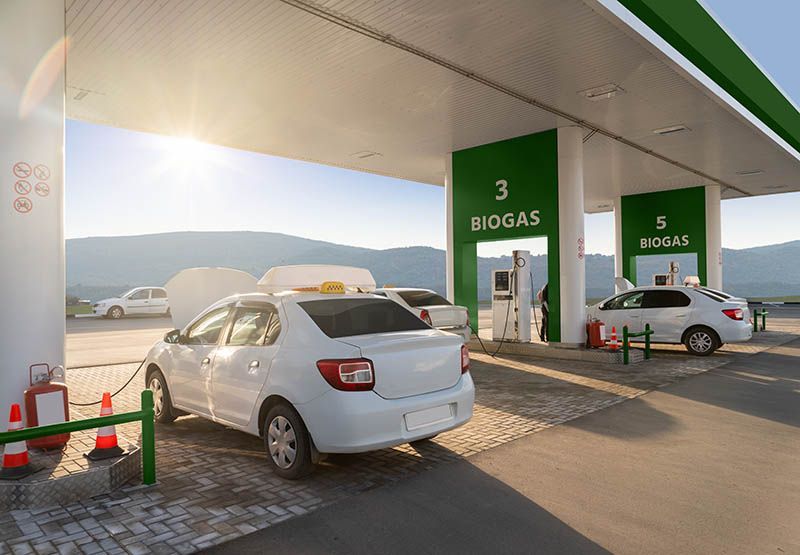
Another alternative fuel that you would have heard of is biofuel. Biofuels break down plant or animal matter and transform them into bioethanol or biodiesel, which are then added to regular gasoline or diesel to improve their environmental footprints. Biofuels are nothing new, and the E10 fuel in the U.S. and Europe already contains up to 10 percent ethanol.
While biofuels are an important tool in the shift away from fossil fuels, they are unlikely to become a dominant energy source for mobility in the future. While vehicles running on high- or full-ethanol (E85-E100) blends exist, they require special engine design and are, thus, fairly rare.
As a result, biofuels are at present more of a complement for reducing the emissions from existing ICE vehicles than an entirely separate alternative to traditional fuels.
The future is electric
While other alternative fuels can be valuable tools in the fight against transport emissions, ultimately, battery electric vehicles are set to be the leading solution for decarbonizing transport. Indeed, hydrogen is promising but must contend with a high cost, inefficient production, and an underdeveloped infrastructure, while biofuels are more of an addition to traditional fuels than an independent alternative.
The clearest opportunities for fuel retailers today lie with electric vehicles. While today, the EV-charging value pool is negligible, by 2030, it’s estimated to be a whopping $20 billion, according to McKinsey. With their existing infrastructure and strategic locations, fuel retailers can tap into this lucrative opportunity and ensure their long-term success by staying ahead of the curve.
The key factors for success will be location, as always, and customer experience. To establish a first-mover advantage, fuel retailers will need to invest early to learn about customer needs and experiment with new propositions and formats. In doing so, they can capitalize on synergies with their established operations and take advantage of the long transition period as the global vehicle pool gradually converts to electric.
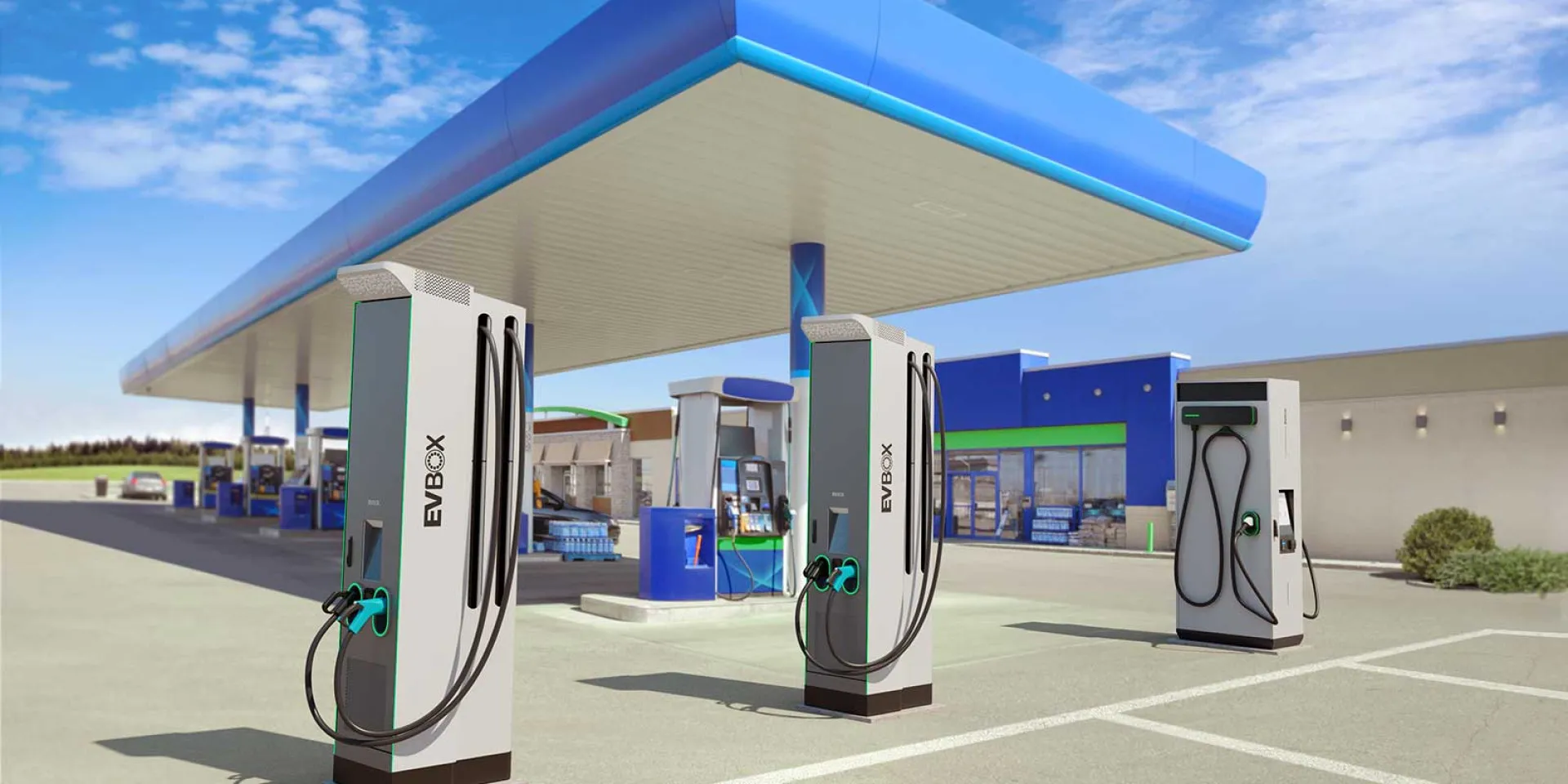


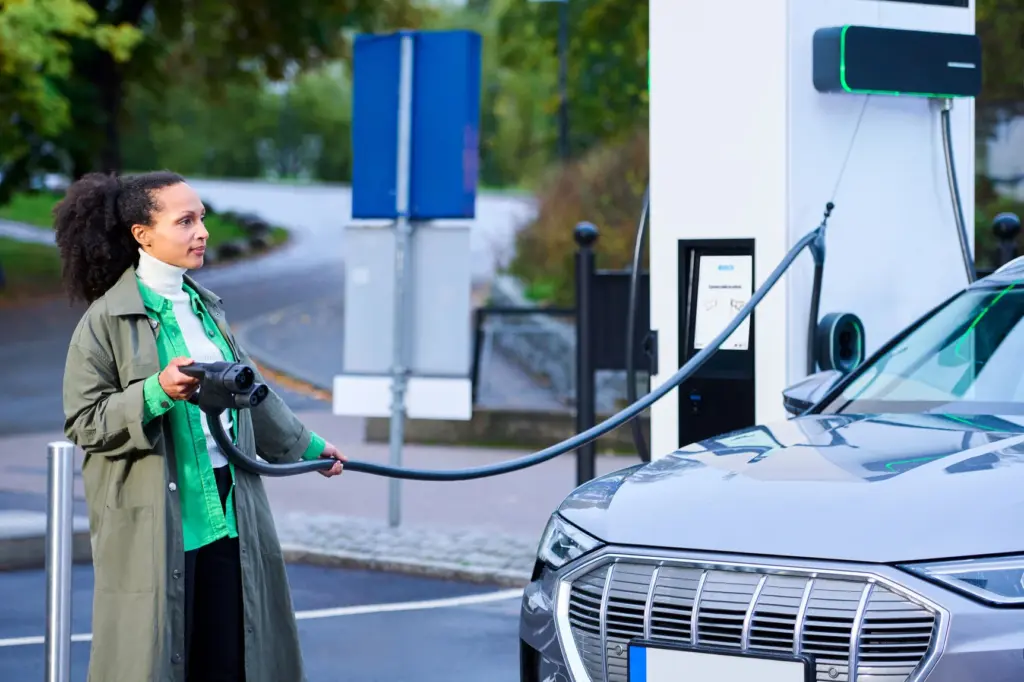
![How far can an electric car go on one charge? [May 2023 updated]](https://evbox.com/app/uploads/2025/09/shutterstock_2115845192-min.webp)